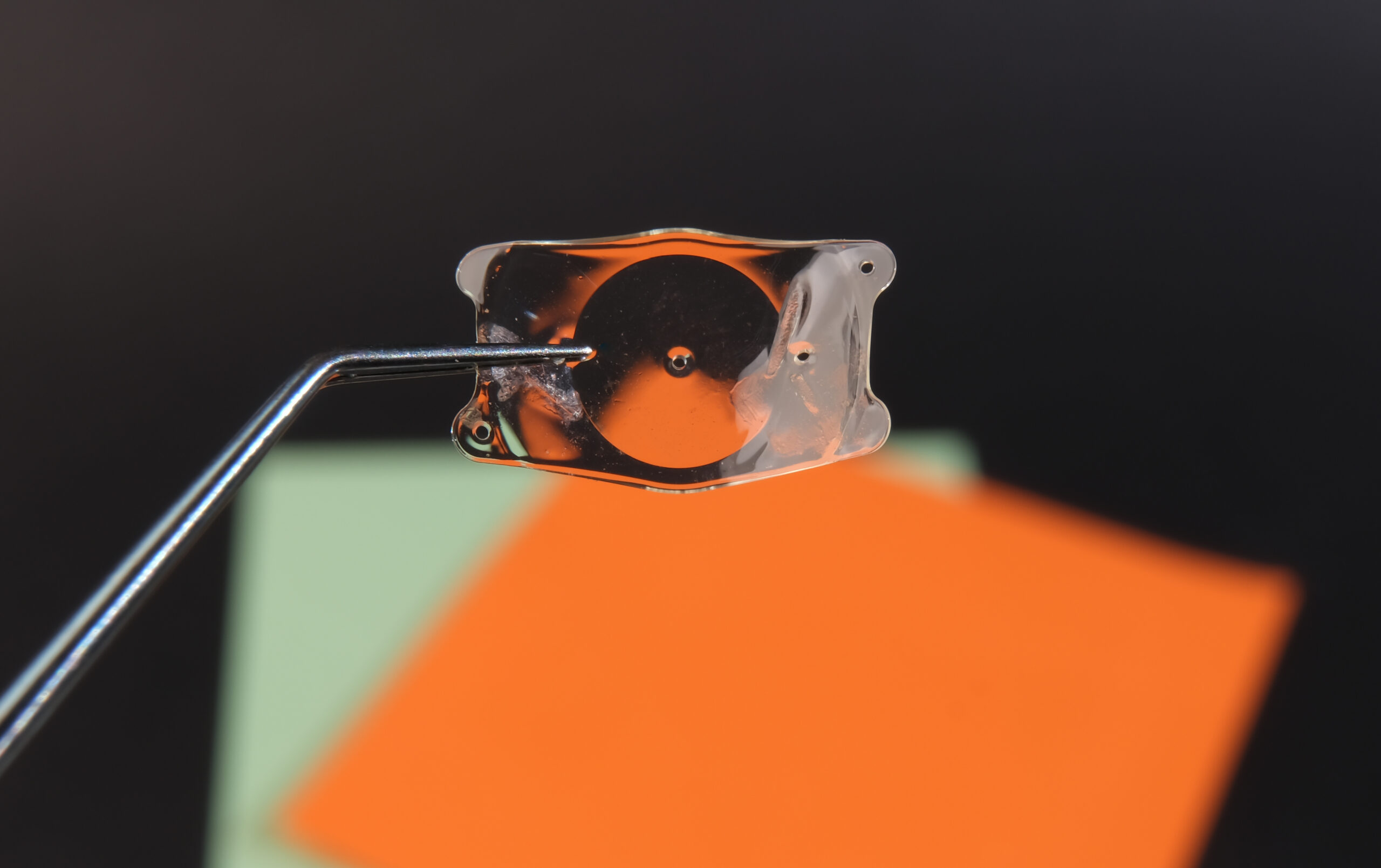How Does the Phakic ICL Lens Work in Your Eye?

Position of the Phakic ICL lens inside the human eye
The Phakic ICL (Implantable Collamer® Lens) is an advanced refractive surgery technology designed to correct myopia from –3.0D to –20.0D and astigmatism from 1.0D to 4.0D. Unlike laser procedures such as LASIK or PRK, Phakic ICL does not damage the cornea, preserves the natural structure of the eye, and provides sharp, long-lasting vision.
How Phakic ICL Works
- Placement: The Phakic ICL lens is implanted behind the iris and in front of the natural lens, in a space called the posterior chamber. This placement allows it to function without touching the cornea.
- Light refraction principle: Phakic ICL acts as an “add-on lens” in a camera, guiding and focusing light directly onto the retina to create sharp images.
- Collamer® material: Exclusively from STAAR Surgical, containing natural collagen, highly biocompatible, UV-protective, and non-inflammatory.
- KS-AquaPort design: A 0.36 mm central hole that allows natural aqueous humor flow, eliminating the need for peripheral iridotomy like older ICL generations.
- Biological harmony: The softness and flexibility of Collamer allow Phakic ICL to adapt seamlessly to eye structures, so patients cannot feel the lens inside the eye.
The Surgical Procedure
- Examination and measurements: Refraction test, anterior chamber depth, corneal mapping, and endothelial cell density evaluation.
- Anesthesia and pupil dilation: Eye drops are applied to numb the surface and dilate the pupils.
- Small incision: About 3 mm at the edge of the cornea.
- Lens implantation: The Phakic ICL lens is folded, inserted through the incision, and then gently unfolded.
- Position adjustment: The surgeon aligns the lens for optimal optical axis.
- Completion: No stitches required. Each eye takes 20–30 minutes, with recovery in 1–2 days.
Breakthrough Advantages
| Criteria | Phakic ICL | LASIK | PRK |
|---|---|---|---|
| Corneal cutting | No | Yes | Yes |
| Dry eye risk | Rare | Common | Common |
| Treat very high myopia (–15D to –20D) | Yes | No | Limited |
| Thin cornea | Suitable | No | No |
| Removable if needed | Yes | No | No |
| UV protection | Yes | No | No |
| Recovery time | 1–2 days | 3–5 days | 5–7 days |
Outstanding Benefits

Phakic ICL lens before implantation
- Clear vision day and night – Reduces glare, halos, and improves night vision.
- No dry eye – Preserves the corneal surface, ideal for dry eye patients.
- Flexible solution – Can be removed or replaced if necessary.
- Eye protection – Filters UV rays and prevents long-term retinal damage.
- Fast recovery – Resume normal activities within 24–48 hours.
- High satisfaction – 99.4% of patients would choose the procedure again (international survey).
Who Is a Good Candidate for Phakic ICL?
- Myopia from –3.0D to –20.0D, with/without astigmatism from 1.0D to 4.0D.
- Ages 21–45 with stable refraction for at least 1 year.
- Thin cornea, dry eye, or unsuitable for LASIK/PRK.
- Anterior chamber depth ≥ 3.0 mm, no serious ocular diseases.
The Cornea – A Precious Structure to Protect
The cornea – often referred to as the “clear window” of the eye – is the transparent tissue at the front of the eye that works as a natural lens to focus light onto the retina. Its thickness and curvature are determined from birth and remain stable for life. However, refractive laser procedures such as LASIK or PRK involve corneal tissue removal, thinning the cornea and altering its natural curvature, which may affect long-term visual safety and stability.
When LASIK Is No Longer Suitable

Eye examination before Phakic ICL surgery
The American Academy of Ophthalmology (AAO) and the FDA have reported that about 10–20% of patients seeking LASIK are excluded due to thin corneas, very high prescriptions, or other eye conditions. For such cases, Phakic ICL EVO+ is often recommended as the optimal alternative, or patients may continue using glasses.
Phakic ICL EVO+ is more costly than LASIK (around 85 million VND per procedure) but provides superior outcomes, especially for patients with thin corneas or high myopia/astigmatism.
Phakic ICL – Maximizing Corneal Preservation
The implantation technique of Phakic ICL preserves corneal tissue while extending treatment ranges up to –18D myopia and 6D astigmatism. After surgery, patients achieve HD Vision with sharp, stable eyesight and no dry eye.
Additionally, Phakic ICL provides UV protection, shielding both the lens and retina from long-term damage. With its soft, thin, lightweight, and stable design, the lens does not cause discomfort or displacement during eye rubbing or physical activity. The lens can remain in the eye for decades, and if age-related conditions such as cataracts arise, it can be removed for further treatment. This is why Phakic ICL is highly popular in developed countries such as France, Germany, the USA, Switzerland, Japan, South Korea, Singapore, and China.

 vi
vi 17-Aug-2025
17-Aug-2025











 0916.741.763
0916.741.763 Appointment
Appointment